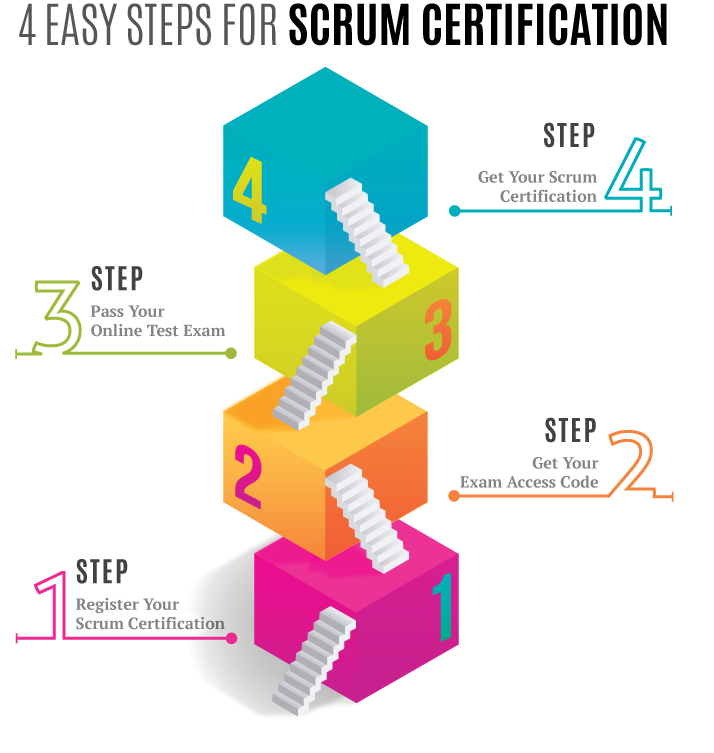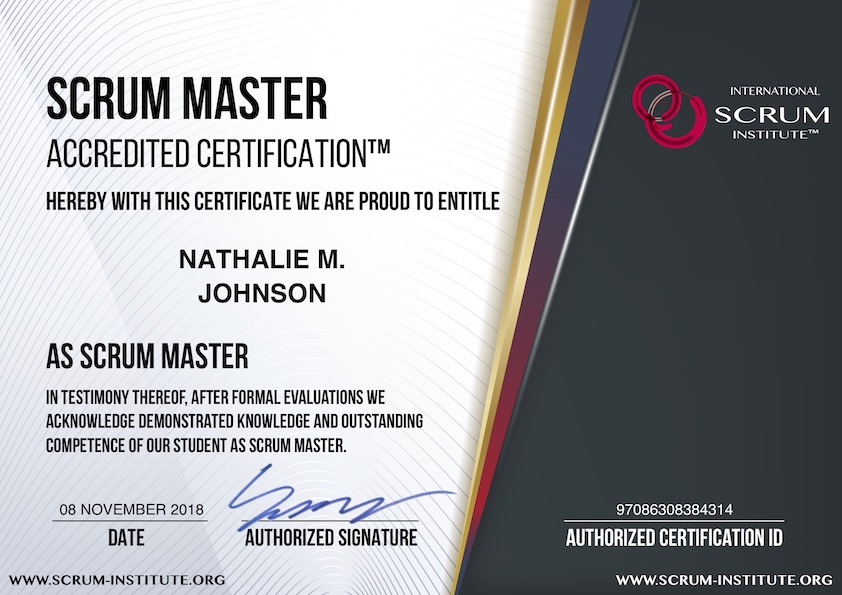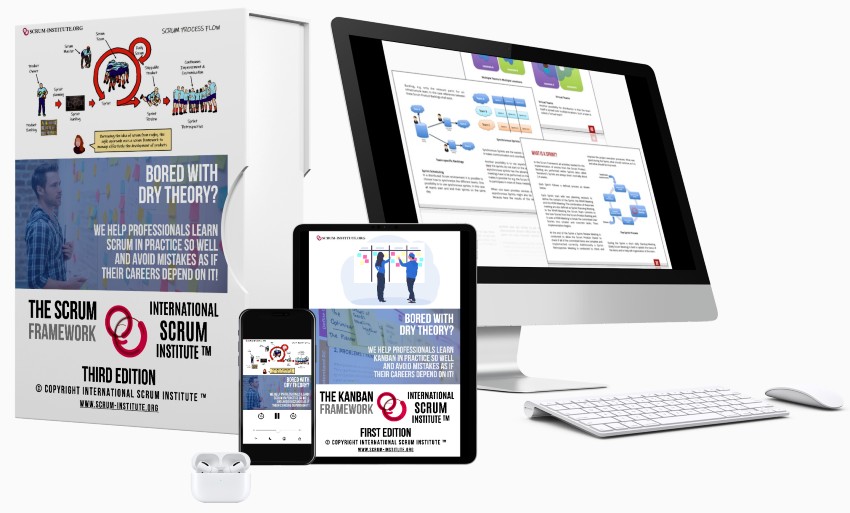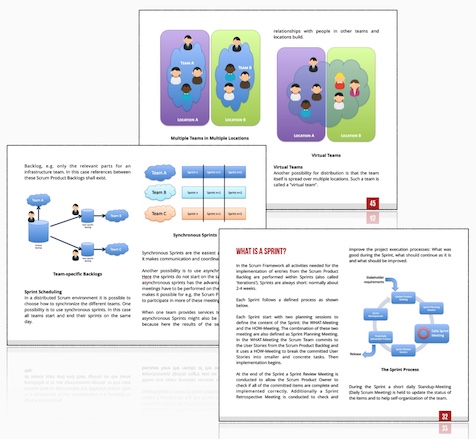Scrum Grooming Meeting:
Backlog Refinement Meetings Best Practices
A Scrum grooming meeting, known as backlog refinement, involves a focused conversation between the team and product owner. They pore over each detail of the product backlog, ensuring it's primed and ready for sprint planning. But this is not just about cleaning up the backlog. It brings unfamiliar product tales into common understanding, sheds light on each user story's acceptance scale, and surfs through the ups and downs of each sprint. So, from the moment you step into this meeting, it's a journey of sharing insights and generating clarity for what is ahead.
Let's dive in to see what this process entails...
The purpose of a Scrum grooming meeting is to review and refine the product backlog items, ensuring they are ready for upcoming sprints. This collaborative session allows the team to discuss requirements, estimate effort, and prioritize work, ultimately enhancing the clarity and effectiveness of sprint planning.
Definition of Scrum Grooming (Backlog Refinement) Meeting
Scrum Backlog Refinement (Grooming) Meetings aim to keep the Product Backlog up to date. So the Product Backlog reflects the best know-how and understanding of the Scrum team about the ongoing Scrum project.
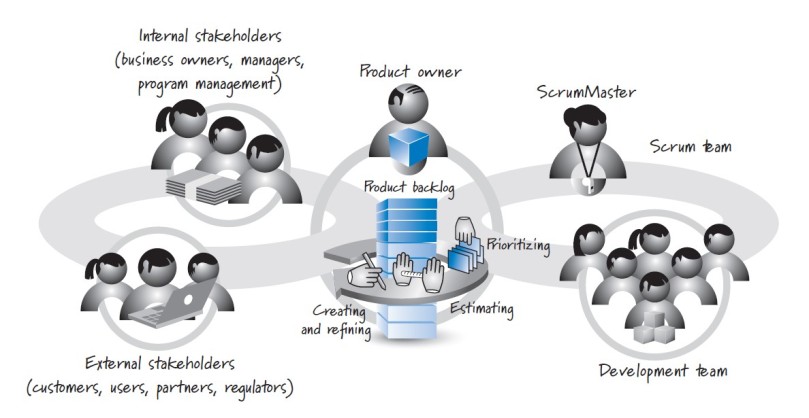
Scrum Grooming Meeting
Definition: Scrum Backlog Refinement, often referred to as Scrum Grooming (and sometimes Backlog Grooming), is a collaborative and recurring meeting activity in the Scrum framework where the Scrum Team meticulously examines and enhances the items within the product backlog. During this process, things, commonly known as user stories, are scrutinized for clarity, feasibility, and relevance. The team, including the Product Owner and Scrum Master, actively engages in discussions to prioritize these items based on their business value for stakeholders and dependencies, and assigns story points, a relative estimation unit, to quantify the complexity of each task. This collective effort ensures that the product backlog remains well-ordered, enabling the Scrum Team to seamlessly plan and execute development cycles.
Scrum Backlog Refinement meetings can happen on-demand or scheduled basis up to two times a week, 30 minutes each session. The Scrum Team, the Scrum Product Owner, and the Scrum Master participate in these meetings.
During Scrum Backlog Refinement (Grooming) meetings, the participants fine-tune the Scrum Product Backlog with the following actions:
- Add new user stories based on newly discovered requirements.
- Remove user stories which are no longer required for the product.
- Fine-tune estimates of user stories.
- Update priorities of user stories.
- Split giant user stories into digestible smaller user stories, and prioritize them accordingly.
Here are our some key suggestions and best practices to improve the outcomes of Backlog Refinement Meetings:
- Ensure Cross Team Participation, which means you identify the dependencies as early as it is possible,
- Size User Stories Correctly, which means all user stories can result in a shippable product increment within one single Sprint,
- Prioritize User Stories, which means you deliver immediate value to end-users, enable quick wins, and make them happy,
- Estimate Like a Pro, which means you obtain actionable inputs for reliable release planning (See more about Scrum Release Planning),
- Identify Dependencies, which means you pull required teams and resources on board to make your project a success,
- Uncover Risks, which means you avoid tedious surprises during the later stages of your project.
What is a Scrum Grooming Meeting?
A Scrum grooming meeting, sometimes referred to as backlog refinement, is an essential part of the Scrum framework. It serves as a collaborative session where the development team and the product owner come together to review and discuss the items in the product backlog. This process aims to ensure that the backlog is well-prepared for sprint planning, fostering a shared understanding of user stories and their acceptance criteria.
During this meeting, the team has the opportunity to clarify any ambiguities within the user stories, ensuring that everyone comprehensively understands what needs to be accomplished. By discussing each item in detail, they can identify potential issues and address them before the sprint planning meeting, effectively minimizing uncertainties and misinterpretations. This proactive approach enables the team to have a clear vision of the work that lies ahead, fostering a sense of alignment and shared purpose.
For instance, imagine a scenario in which a user story lacks specificity regarding its acceptance criteria. In this grooming meeting, team members can collaborate with the product owner to define these criteria clearly, reducing the risk of misunderstandings and enhancing the chances of successful sprint execution.
Additionally, apart from refining individual backlog items, these sessions provide an opportunity to re-evaluate priorities based on new insights or changes in project requirements. This adaptability ensures that the product backlog remains up-to-date and reflective of current project needs.
With a clear understanding of what occurs during a Scrum grooming meeting, it's evident that this practice fosters collaboration and ensures that the entire team is equipped with comprehensive information before entering into sprint planning meetings.
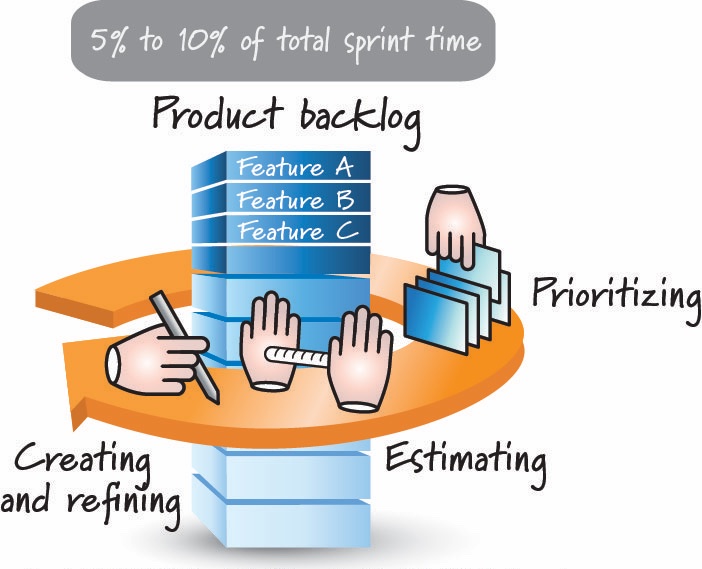
Scrum Backlog Refinement Meeting
Benefits of Grooming Meetings
Grooming meetings may seem like an additional step in your already busy sprint cycle, but they bring several undeniable benefits to the team. Let's delve into some of these advantages in detail.
Improved Sprint Planning
Grooming the backlog can be likened to preparing the canvas before painting a masterpiece. A well-groomed backlog serves as the foundation for seamless sprint planning sessions, eliminating confusion and helping the team focus on what’s most important during the sprint. This ultimately leads to more productive and efficient planning discussions, ensuring smoother sprint executions.
Smoother sprint planning: Refined backlogs make it easier to identify and prioritize user stories, streamlining the sprint planning process and saving valuable time for other critical tasks.
Increased Clarity
A well-groomed backlog brings clarity and precision to user stories, offering a clear roadmap to follow during sprint execution. By breaking down large items into smaller, more manageable tasks, the team gains a deeper understanding of the work involved, leading to more accurate estimation and planning.
Enhanced understanding: As user stories become clearer and more granular through grooming, they are easier to comprehend, estimate, and plan for—ultimately leading to improved accuracy and efficiency during sprints.
Efficient Execution
Another significant advantage of grooming meetings is their role in promoting efficient execution. By addressing dependencies and potential obstacles early on, surprises are minimized during sprints. This proactive approach allows the team to anticipate challenges and work towards mitigating them before they cause major disruptions, ensuring smooth progress and reducing last-minute firefighting efforts.
Minimized surprises: Identifying dependencies and potential obstacles in advance helps the team steer clear of unexpected hurdles during sprint execution, ensuring smoother progress and reducing last-minute firefighting efforts.
Now that we've explored some key advantages of grooming meetings, let's shift our focus to the objectives they aim to achieve.
Objectives of Grooming Meetings
The main goals of grooming meetings revolve around refining user stories, identifying dependencies, and addressing ambiguities—an essential part of maintaining a well-organized product backlog for Agile project management.

Scrum User Story Grooming
Refining User Stories
One of the primary objectives of grooming meetings is to break down large user stories into smaller, more precise tasks or sub-stories. This meticulous refinement process simplifies story implementation and enhances the team's ability to understand and estimate each piece of work accurately.
Precision in task breakdown: By refining user stories through detailed discussions, the team can narrow their focus on specific tasks or functionalities within each story, making them more manageable for implementation and testing.
Identifying Dependencies
Recognizing interdependencies between user stories is essential for effective sprint planning and execution. Grooming meetings provide a dedicated space for teams to identify these connections early on, enabling proactive planning to address dependencies before they impact sprint progress.
Proactive dependency management: Early identification of dependencies allows teams to allocate resources strategically and collaborate effectively across various user stories without last-minute scrambling.
Addressing Ambiguities
Clarity is key in Agile project management, and grooming meetings play a crucial role in addressing any uncertainties or ambiguities present in user story details. Working together to eliminate vagueness ensures that everyone involved has a unified understanding of the tasks at hand.
Unified understanding: Resolving ambiguities promotes a shared vision among team members, fostering alignment and coherence in executing user stories during sprints.
By focusing on these objectives within grooming meetings, Agile teams can ensure that their backlog remains refined, clear, and ready for efficient sprint execution—ultimately contributing to the overall success of their projects.
Taking a magnifying glass to grasp finer details often leads us to an essential aspect – detailing requirements for the product.

Scrum Product Backlog Grooming
Detailing Requirements for the Product
When it comes to grooming meetings, one of the key goals is to ensure that user stories are thoroughly elaborated on, breaking down both functional and non-functional requirements. This detailed discussion provides a clear picture to everyone involved, ensuring that each item in the product backlog is well-understood.
During the grooming session, the product owner takes center stage as the facilitator, guiding the team through the intricacies of various user stories. They outline the functional requirements, which represent specific features and functions that each story must fulfill. For example, in an e-commerce platform, a functional requirement might be the ability for users to add items to their cart. In addition to functional requirements, non-functional requirements are also explored in detail. These typically relate to qualities such as performance, security, and usability. An example of a non-functional requirement for a banking app may focus on ensuring secure user authentication procedures. Detailing these non-functional aspects ensures that the entire team is aligned on broader considerations beyond just feature functionality.
It's essential for team members to actively participate in this detailed discussion. By doing so, they gain a comprehensive understanding of what is expected from each user story. This clarity helps in aligning everyone around common goals and expectations. It also serves as a valuable opportunity for team members to seek clarification on any aspects that are unclear or ambiguous. For instance, during the discussion on a user story related to a customer checkout process, a developer might raise questions about potential integration with payment gateways as part of non-functional requirements. By having these discussions during grooming meetings, potential roadblocks are identified early, and proactive measures can be taken.
Moreover, this detailed exploration allows team members to anticipate potential challenges and dependencies associated with specific user stories, empowering them to plan more effectively and allocate resources accordingly.
In summary, by immersing themselves in detailing the specific requirements for each user story during grooming meetings, teams can set clear expectations and mitigate risks early on in the software development lifecycle. This collaborative approach fosters shared understanding and paves the way for more effective planning and execution down the line.
The meticulous preparation during grooming meetings sets the stage for seamless sprint planning—where ideas shape into actionable plans and strategies for successful sprints.
Enhancing the Sprint Planning Process
The sprint planning process holds immense importance in the Scrum framework. It's where the team decides on the work they will take on in the upcoming sprint. But to ensure a smooth and focused process, it's pivotal to establish a strong foundation through effective grooming meetings.
Grooming Meetings play a crucial role in shaping the success of the sprint planning process by refining and preparing user stories for upcoming sprints. A well-refined user story can significantly ease the process of sprint planning. During these sessions, the product owner articulates different aspects of each user story in detail, defines clear acceptance criteria, and clarifies any ambiguities. This fosters a common understanding among all team members regarding the expectations and goals associated with each user story and allows for prioritization of product backlog items based on their importance and dependencies.
Creating well-defined user stories with precise acceptance criteria allows the team to clearly grasp each story's intent, facilitating better estimation during sprint planning. Discussing these details during grooming meetings gives the team an opportunity to thoroughly understand and prepare for upcoming work, resulting in a polished and structured collection of user stories—leading to a smoother sprint planning session and a clearer understanding of the upcoming work, enabling them to commit to a well-crafted sprint goal.
It's akin to going on a road trip without a map or directions—chaotic, right? Grooming meetings serve as a roadmap for the team, ensuring that they are aware of what lies ahead and how to navigate through it smoothly.Effective grooming meetings contribute to greater efficiency, focus, and clarity throughout the entire sprint planning process.
In paving the way for punctual preparation and seamless coordination within an agile team, these practices fortify an equally significant aspect—the participants and their roles.
Participants and Their Roles
The participants in a grooming meeting play crucial roles in paving the way for an effective sprint planning session. Each member brings unique perspectives and insights that collectively contribute to refining product backlog items. Here's a closer look at the roles and specific contributions of each participant:
Product Owner
The Product Owner is central to the grooming meeting, providing critical context and expectations for each user story. They should be well-prepared to facilitate discussions and respond to any queries from the team. Their presence is vital in ensuring that the refined backlog aligns with the vision and goals of the product.
Key Responsibilities:
- Facilitates the discussion with user stories, offering necessary context, details, and expectations.
- Responds to team queries promptly, providing clarifications to ensure a shared understanding of the user stories.
- Acts as the bridge between stakeholders and the Scrum Team, representing their needs and preferences through requirements refinement.
A proficient Product Owner will guide the team through user stories, relaying valuable insights accumulated from stakeholders and customers. They are expected to balance end-user needs with business objectives, making tough decisions when there are conflicting priorities. By demonstrating strong leadership skills and clear communication, they foster an environment where diverse perspectives converge to crystallize requirements effectively.
Scrum Team Members
The active participation of Scrum Team members in grooming meetings is essential for gaining a holistic understanding of user stories and collectively contributing to their refinement. Their involvement aids in breaking down complex tasks, estimating effort accurately, and assessing technical feasibility.
Key Contributions:
- Actively participate in discussions on user stories, seeking clarity on details and providing valuable inputs during refinement.
- Offer insights into effort estimation, helping gauge the complexity of user stories based on their expertise.
- Contribute by sharing diverse viewpoints, ensuring that all aspects of a user story are thoroughly examined.
In addition to refining requirements, this collaborative effort allows team members to align themselves with upcoming work, preparing for sprint planning by fostering a deep understanding of upcoming tasks.
Scrum Master
The Scrum Master takes on an important facilitator role during grooming meetings, ensuring that discussions stay focused and impediments are addressed effectively. They create a conducive environment where all participants can voice their opinions freely.
Major Roles:
- Guides the team throughout the meeting, steering discussions toward productive refinement without deviating from the agenda.
- Assists in addressing any impediments or roadblocks encountered during requirement refinement.
- Cultivates a collaborative atmosphere where diverse voices are heard, allowing every participant to contribute meaningfully.
Imagine your Scrum Master as a conductor guiding an orchestra. They establish harmony within the team by facilitating healthy discussions, resolving conflicts constructively, and keeping the refinement process steady and progressive. Their efforts set the stage for a smooth transition into sprint planning, ensuring that refined backlog items reflect shared understanding among team members.
By embracing these defined roles and responsibilities in grooming meetings, Agile teams can streamline their sprint planning process by fostering alignment, clarity, collaboration, and shared ownership over product backlog items.
As we gain a deeper understanding of the pivotal roles within grooming meetings, let's now turn our attention to dissecting the systematic intricacies of this indispensable Agile process—the cornerstone of successful sprint planning.
An Overview of the Scrum Grooming Meeting Process
The Scrum grooming process is comparable to prepping for an important event; it sets the stage for success and guarantees a smoother sprint execution. The primary objective is to ensure that the product backlog remains optimized, current, and well-structured by analyzing every aspect of the backlog to pave the way for a successful development cycle.
The first step typically involves reviewing and refining the product backlog. Here, teams meticulously inspect every user story and make any necessary updates or adjustments. It's an opportunity to clear up any confusion, make additions based on new insights, or remove items that are no longer relevant. This phase also involves breaking down each user story into smaller, more manageable tasks if necessary.
Digging deeper into understanding acceptance criteria and addressing dependencies is crucial during this process. Pinpointing specific scenarios and edge cases that need to be met for the completion of user stories, as well as identifying any related tasks, helps prevent bottlenecks down the line.
For instance, consider a scenario where a user story requires integration with an external system. Understanding this dependency early on allows teams to allocate time and resources accordingly, thereby avoiding last-minute scrambles before the sprint deadline.
It's vital to remember that grooming meetings don't just serve as an operational exercise but also as a platform for collaboration among team members. It fosters a collective understanding of upcoming work, ensuring that everyone is aligned in terms of expectations and timelines.
Enhancing our comprehension of these key aspects will allow us to explore some best practices for these meetings...
Prioritizing User Story Discussions
Prioritization is critical during the Scrum grooming meeting, involving decisions about which user stories are most vital for the upcoming sprints. By focusing on the most critical user stories first, the team ensures that the most valuable backlog items are thoroughly groomed, allowing the product owner to have the most pertinent user stories ready for the upcoming sprints.
This doesn't just happen by accident; it requires thoughtful consideration and a strategic approach. The product owner typically takes the lead in this part of the meeting, prioritizing user stories based on their importance and value to the overall project. These user stories should directly contribute to the business goals laid out for the project, ensuring that each sprint delivers maximum value to stakeholders.
It's like planning a road trip: You need to know your destination to decide which route to take.
Strategies for Prioritization
There are several strategies that can be used to prioritize user stories effectively in a Scrum grooming meeting. One common approach is MoSCoW prioritization:
- Must-Have: Non-negotiable requirements that must be implemented in the upcoming sprint.
- Should-Have: Important requirements that are desirable but not mandatory for the upcoming sprint.
- Could-Have: Nice-to-have requirements that are considered if time permits.
- Won't-Have (this time): Requirements explicitly deferred or deprioritized.
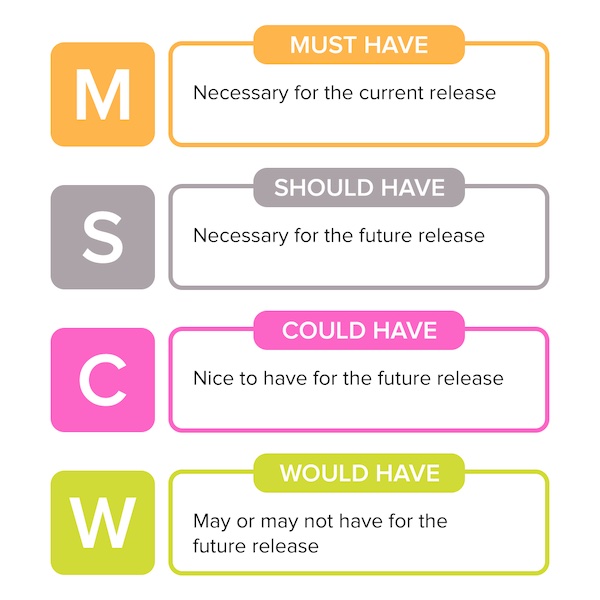
Scrum Grooming Prioritization
Another approach is relative prioritization, where user stories are ranked in relation to each other based on their business value, size, complexity, dependencies, or risks. By employing these strategies, the team can ensure that they focus on grooming and refining the most critical user stories first, providing visibility and clarity for the upcoming sprints.
It's crucial to involve all relevant stakeholders in this process to gather input and insights about the priority of user stories. This collaborative approach helps align everyone on the team with a shared understanding of priorities and objectives.
Prioritizing user story discussions sets the stage for productive and efficient grooming meetings, enabling teams to focus on delivering maximum value in their upcoming sprints.
Sessions on Estimation and Planning
Estimation and planning are vital components of the grooming meeting. This is the phase where the team takes the identified user stories and translates them into tangible tasks and timelines. It's like mapping out a journey before setting off—an indispensable exercise that sets the course for the sprint.
It starts with estimating the effort needed for each user story. This isn't about coming up with an exact number of hours or days for completion. Rather, it's about getting everyone on the same page regarding the magnitude of work involved in each story. This shared understanding is crucial for effective planning, as it allows the team to allocate tasks fairly and avoid underestimating or overloading any team member. To help with estimation, team members often use relative sizing techniques like Planning Poker, where each member assigns a point value to a user story based on its perceived complexity and effort.
Following estimation comes the detailed planning phase. Here, tasks are identified, discussed, and assigned to team members. The aim is not just to break down user stories into smaller tasks but also to align on how these tasks will be carried out and in what order. As a result, this meticulous planning sets clear expectations regarding who does what and by when, further refining the path to achieving the sprint goal. For instance, if a user story involves developing a new feature, the planning session could delve into tasks such as requirements gathering, design review, coding, testing, and documentation. The team decides who will handle each task while considering dependencies and ensuring balanced workloads.
A well-executed estimation and planning session ensures that every task is accounted for and contributes towards fulfilling the acceptance criteria of the user story. By breaking down complex requirements into manageable tasks, the team gains a realistic overview of what lies ahead and can strategize accordingly. Always encourage open discussions during these sessions. Every team member's input is valuable here; it fosters collaboration and empowers individuals to take ownership of their roles within the sprint.
The transition from estimation and planning to the actual execution of tasks embodies the essence of agility—a seamless progression through each step brings teams closer to realizing their goals.
Techniques for Efficient and Effective Meetings
Grooming meetings are crucial for refining the backlog and ensuring that agile teams are on the same page regarding tasks and project requirements. To make sure these meetings run efficiently, several techniques can be applied to keep them focused, productive, and engaging for all team members. One such practice is timeboxing discussions.
Timeboxing discussions involves setting a predefined time limit for each topic or user story to prevent discussions from veering off track or becoming overly detailed. By allocating a specific amount of time to each agenda item, teams can ensure that all important aspects are discussed while avoiding unnecessary delays.
Furthermore, limiting the scope of each meeting is essential to prevent overload and fatigue among team members. Instead of trying to cover every aspect of backlog refinement in a single session, it's more effective to focus on specific user stories or themes during each meeting. This approach allows for deeper exploration and attention to detail within a manageable timeframe.
For instance, dedicating one grooming meeting solely to high-priority user stories or upcoming sprint deliverables can provide the space needed for thorough discussion without overwhelming participants with excessive information.
In addition to timeboxing discussions and limiting meeting scope, utilizing visual aids significantly contributes to the effectiveness of grooming meetings.
Visual Aids: Enhancing Clarity and Engagement
Visual aids such as Kanban boards or digital backlog tools play a vital role in enhancing clarity, organization, and engagement during grooming meetings.
Scrum product backlog boards provide a visually intuitive representation of the backlog items, their status, and progression stages. Furthermore, by utilizing Kanban boards, teams can easily visualize the flow of work items, identify bottlenecks, and prioritize tasks collaboratively.
Similarly, digital backlog tools offer the advantage of centralizing all backlog items in a digital format, allowing real-time updates, comments, and task assignment. This not only facilitates transparency but also streamlines communication among team members regarding backlog refinement activities.
Imagine having a digital tool where everyone can see user stories, add comments in real-time, and track progress without the need for lengthy email chains or separate document updates.
Lastly, fostering active participation from all team members is paramount in ensuring collective ownership of the backlog refinement process.
Encouraging Active Participation: Fostering Ownership and Accountability
When team members actively engage in grooming meetings by sharing insights, providing feedback, and asking questions, they develop a sense of ownership over the backlog.
By encouraging diverse perspectives and input from every team member, grooming meetings become collaborative sessions where individuals feel valued and accountable for the success of backlog refinement.
Engaged team members are more likely to take responsibility for the accuracy and completeness of backlog items, leading to improved alignment with project goals and enhanced commitment within the team.
These techniques collectively contribute to creating an environment where grooming meetings are not only efficient but also inclusive and productive. By implementing timeboxing discussions, limiting meeting scope, utilizing visual aids such as Kanban boards or digital tools, and encouraging active participation from all team members, agile teams can ensure that their grooming meetings result in refined backlogs that align closely with project objectives.
Frequently Asked Questions about Scrum Grooming (Backlog Refinement) Meetings
Are there any best practices or tips for running an effective scrum grooming meeting?
Answer: Absolutely! Some best practices for running an effective scrum grooming meeting include setting a clear agenda and timebox, ensuring active participation from all team members, prioritizing user stories based on their value and complexity, and maintaining a focus on refining the product backlog. According to a survey conducted by the International Scrum Institute, teams that follow these practices reported improved collaboration, productivity, and overall success of their sprints.
What is the purpose of a scrum grooming meeting?
Answer: The purpose of a scrum grooming meeting is to discuss and refine the product backlog items to ensure they are well-defined, prioritized, and estimated for upcoming sprints. This meeting helps the agile teams to have a shared understanding of the requirements and plan the work effectively. According to a survey conducted by Scrum Institute, teams that regularly conduct grooming meetings experience 50% fewer defects in their software releases compared to teams that neglect this practice.
What are the typical activities or topics discussed during a scrum grooming meeting?
Answer: During a scrum grooming meeting, the team typically discusses and refines the product backlog items. This includes breaking down the user stories into smaller tasks, estimating effort and complexity, clarifying requirements, and prioritizing the backlog. This helps increase clarity and alignment among team members, reduces ambiguity, and allows for better planning and more accurate forecasting of project timelines. According to a survey by Agile Alliance, 78% of agile teams reported that grooming meetings improved their productivity by enhancing understanding of user stories and reducing rework.
How long does a scrum grooming meeting usually last?
Answer: A scrum grooming meeting typically lasts around one to two hours. This duration allows the team to review and refine the product backlog, estimate user stories, and ensure that the backlog items are well-prepared for upcoming sprints. However, the exact duration may vary depending on the size of the team and the complexity of the project. According to a survey conducted by International Scrum Institute, approximately 70% of teams reported their grooming meetings lasting between 1-2 hours, while only 5% reported meetings longer than 2 hours.
What roles and team members should be present in a scrum grooming meeting?
Answer: In a scrum grooming meeting, the essential roles and team members that should be present are the product owner, the scrum master, and the development team. The product owner brings their vision and knowledge of the product to ensure accurate requirements are defined. The scrum master facilitates the meeting and helps maintain focus and efficiency. The development team contributes their expertise and provides insights into technical aspects. According to a survey conducted by International Scrum Institute, successful scrum teams highlight the importance of these roles in effective grooming meetings, resulting in improved collaboration and overall productivity.
What is one key benefit of a backlog refinement session?
Answer: One key benefit of a backlog refinement session, also known as backlog grooming, is the collaborative refinement and prioritization of items within the product backlog. This session involves crucial interactions between product owners, who bring their vision and strategic goals for the product, and the development team, which provides technical insights and estimations.
During the backlog refinement process, the team can prioritize the backlog items based on the product owner's input, ensuring that the most valuable features are at the top of the list. This not only facilitates a clear understanding of the product vision but also allows the team to focus on delivering high-priority functionalities during each iteration.
Additionally, backlog refinement sessions are an opportune time for the team to estimate the effort required for each backlog item, often using story points. This estimation helps in planning and allocating work effectively during the iteration, promoting a more accurate and achievable commitment to the goals set for that specific time-boxed period.
Moreover, the practice of user story mapping can be integrated into the backlog refinement session, aiding in visualizing the user's journey and ensuring a holistic understanding of the product's development. This collaborative and iterative approach to backlog grooming contributes to a well-prepared and prioritized backlog, ultimately enhancing the efficiency and success of each iteration in the development process.
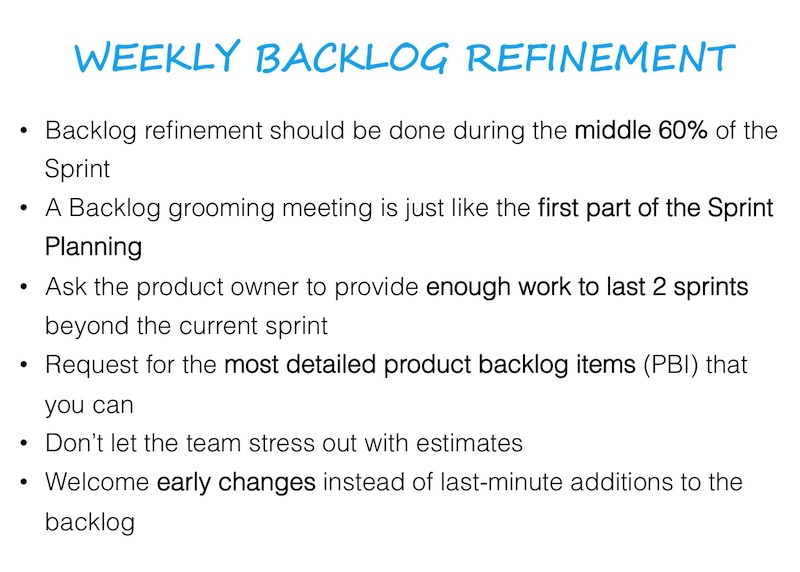
Scrum Backlog Refinement
Recap for Scrum Grooming (Backlog Refinement) Meetings
Scrum grooming, also referred to as product backlog refinement, is a pivotal ceremony within the Scrum framework that demands the collective effort of the product team. This session involves collaborative discussions between the product manager, the Scrum team, and other stakeholders to meticulously examine and prioritize items in the product backlog. The primary objective is to refine user stories, ensuring they are well-defined, properly estimated, and aligned with the company's overarching goals. With the product manager at the helm, guiding the team with a clear product vision, the grooming session sets the stage for seamless product delivery.
During these grooming meetings, estimates take center stage as the team deliberates on the effort required for each backlog item. This not only aids in planning for upcoming iterations but also facilitates a shared understanding among team members about the complexity and scope of the tasks ahead. The collective mindset cultivated in these sessions fosters a culture of collaboration, ensuring that everyone involved is on the same page regarding the priorities and requirements of the product.
In the case of product backlog grooming, the structure of the discussions is key. By structuring conversations around user needs, technical feasibility, and business priorities, the team can unlock valuable insights that contribute to the overall success of the product. This structured approach ensures that the Scrum team remains aligned with the company's objectives, promoting efficient delivery and continuous improvement.
As you delve deeper into the intricacies of Scrum grooming, consider expanding your knowledge further by exploring the Scrum Framework Book from the Scrum Institute. This comprehensive resource provides in-depth insights into the Scrum framework, offering valuable guidance for individuals and teams seeking to master the art of agile project management. Download your free copy of the Scrum Framework Book today and empower yourself with the knowledge to navigate the complexities of Scrum with confidence and proficiency.
Share It With Your Colleagues and Friends to Help Them Learn:
Scrum Grooming Meeting: Backlog Refinement Best Practices
|
|

|

|

|

|
|
 SCRUM INSTITUTE™
SCRUM INSTITUTE™






